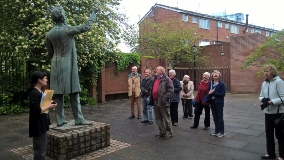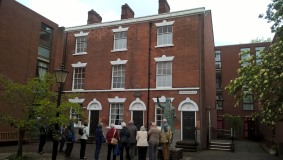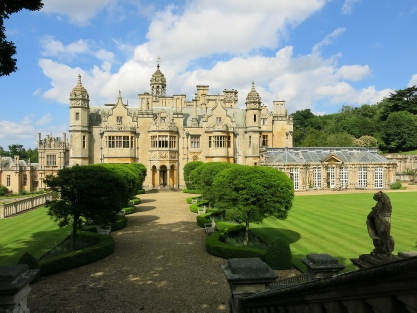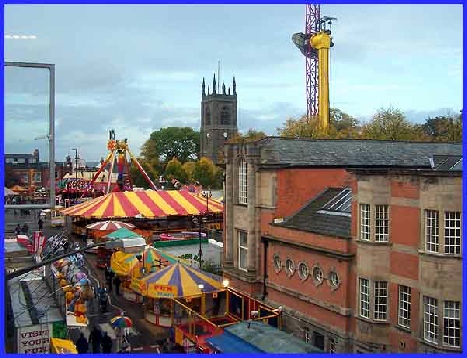
Lambley Historical Society 2011 - all images on this website subject to copyright Terms of Use & Copyright





Reports from our meetings

June 2016
Our visit to The William Booth Museum in Sneinton
The first of our summer visits was in May to the William Booth Museum in Sneinton. After a welcoming cup of coffee in the adjacent complex we were introduced to the enthusiastic curator, Julie Obermeyer, who described the museum as “the unknown jewel of Nottingham”. She is determined to put the museum on the Nottingham Tourist Map and is successfully encouraging visits from local schoolchildren.
The museum is housed in three restored Regency terraced houses in the elegant Notintone Place. The central house is where William Booth was born. The rooms in the three stories have been furnished as they may have been in young William and his parents’ day. The rooms in the houses either side
Reports from our earlier meetings
February 2016 Pete Smith, Nottingham Town Houses.
March 2016 Peter Hammond, a historical tour of Whitby.


contain items belonging to William Booth, his wife Catherine and their family. Information boards tell the story of the formation of The Salvation Army.
Our morning ended with a visit with the Museum’s curator to the neighbouring St. Stephen’s Church for more Booth memorabilia, opened specially for us. The church alone merits a visit for its mediaeval miserichords originally belonging to St. Mary’s in the Lace Market and a magnificent gilded reredos carved in Oberammagau. In the surrounding churchyard is the grave of George Green, the scientist of the nearby eponymous windmill. Another story, another visit?
Twenty six members and friends spent a June afternoon at Harlaxton Manor in Lincolnshire. The Manor was built in the early nineteenth century by Gregory Gregory, a wealthy man with aspirations. Anthony Salvin, his architect, produced an exuberant mix of Elizabethan, Baroque and Rococo. Harlaxton was Gregory’s personal fantasy to which he devoted his life and money but was only able to enjoy living there for a few years before he died in 1854 with no direct heir. The house passed through the next years to various distant relatives who mostly had no wish to live in such a palatial establishment.

It was in danger of demolition by 1935. Most of the contents had been sold but it was reprieved by a lady who saw an advertisement in The Times. The daughter of a coal porter and a washerwoman, Mrs Van der Elst had made a fortune making Shavex , the first brushless shaving cream. To her credit she did a lot for Harlaxton, introducing electricity, installing the massive chandelier in the Great Hall and the imposing lions in the garden. Mrs Van der Elst was eventually forced to sell. The Manor became the property of the Jesuits who briefly occupied it before leasing to first Stanford University California and then the University of Evansville in the State of Indiana whose trustees now own it.
So when the Lambley Historical Society was welcomed on the front steps, it was under the Stars and Stripes and the Union Jack flying high above. We were taken round a succession of state rooms. Much gilding, marble, statuary, elaborate plasterwork; the quality of the workmanship down to the door hinges is of the highest order. There was evidence that even the grandest parts are used as lecture rooms for the students who obviously treasure and respect their surroundings. A few Summer School students were enjoying a relaxing Sunday afternoon. It is well used and cared for. Refreshed in the Dining Hall, we were able to explore the grounds, formal terraces, the Italian Garden, the Dutch Canal, all surrounded by mature trees and guarded by the larger than life stone lions.
Harlaxton Manor may not be to a purist’s taste but it is unique and our party was privileged to have been shown round by such an enthusiastic and well informed guide, a former member of the teaching staff.
test
September 2016
Ann Featherstone - The Victorian Fair: freaks and fisticuffs
The first meeting of the autumn season was a memorable one. Our speaker, Ann Featherstone has been fascinated with Fairs and Fairgrounds all her life and during the course of the evening, passed on to us her knowledge and enthusiasm.
Originally, fairs were held for a variety of reasons.  Hiring Fairs, where servants were hired for six months with the option of a week’s “opt-out”. Trade Fairs, like our Goose Fair, for buying and selling goods. Wakes Fairs had religious roots. Fairs had their own rituals; they tended to be held in the same place at the same time of year. (Our Goose Fair again; next week, very topical!) Some fairs had their own speciality food, called “Fairings”. Lincolnshire Plum Bread: Gingerbread was very popular. Oysters were the “Fast Food” of the fair.
Hiring Fairs, where servants were hired for six months with the option of a week’s “opt-out”. Trade Fairs, like our Goose Fair, for buying and selling goods. Wakes Fairs had religious roots. Fairs had their own rituals; they tended to be held in the same place at the same time of year. (Our Goose Fair again; next week, very topical!) Some fairs had their own speciality food, called “Fairings”. Lincolnshire Plum Bread: Gingerbread was very popular. Oysters were the “Fast Food” of the fair.
While fairs brought considerable income to an area, they could also create trouble and in the 1800s, Acts of Parliament were passed giving Local Authorities some control . The days of public executions as a spectacle were gone and new attractions introduced. Roundabouts, Rides, Swing Boats, Menageries, Boxing Booths and the lure of “the Bearded Lady” or “The Ilkeston Giant”.
Ann admitted she would never have been able to resist the peepshows with their attractions suggested outside and challenged us, the enthralled audience, to deny we wouldn’t have gone in with her. The applause proved something, if only that we were left wanting more.
July 2016
Our visit to Harlaxton Manor